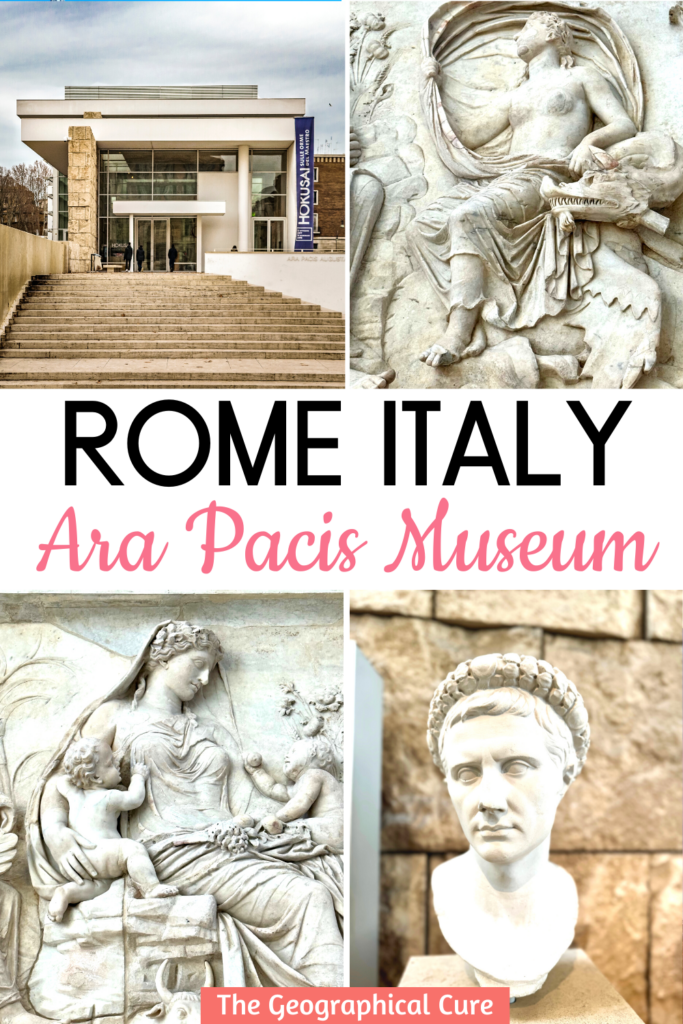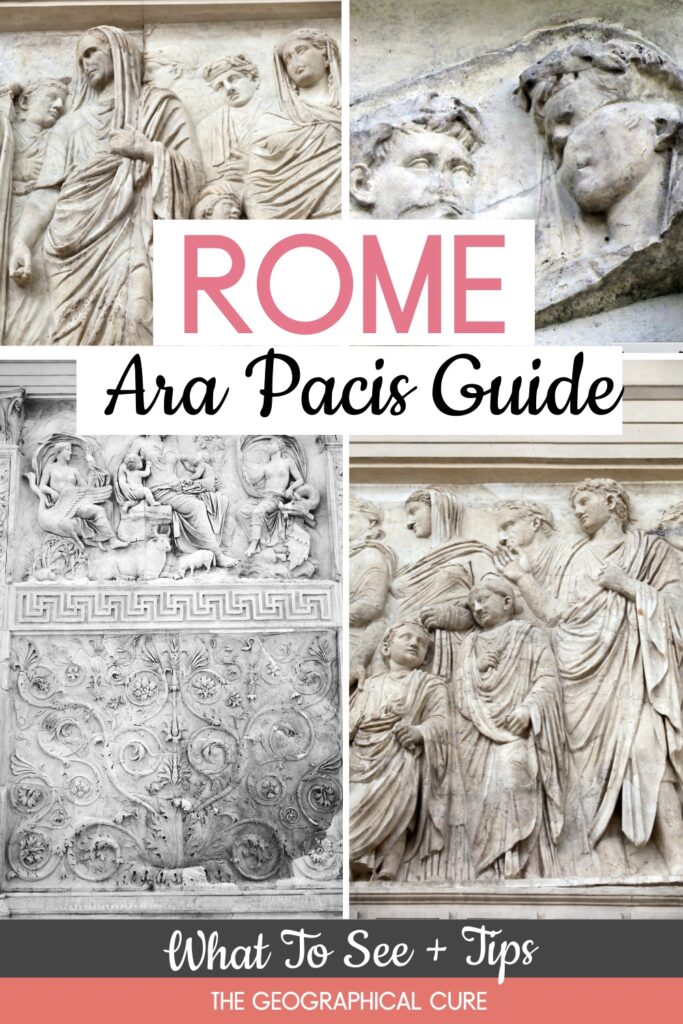The Ara Pacis, or Altar of Peace, is one of Ancient Rome’s most significant monuments. Built in the 1st century BC, this 2,000 year old altar symbolizes the peace and prosperity of Emperor Augustus’s reign.
When the Roman Senate commissioned the Ara Pacis, Augustus had triumphantly returned from conquering Spain and Gaul. The altar was intended to burnish Augustus’s image, making him the symbol of the new Roman golden age.
It’s adorned with imagery from Rome’s history, of Augustus’ accomplishments, an the Imperial family. The message was loud and clear. Peace had returned thanks to Augustus.
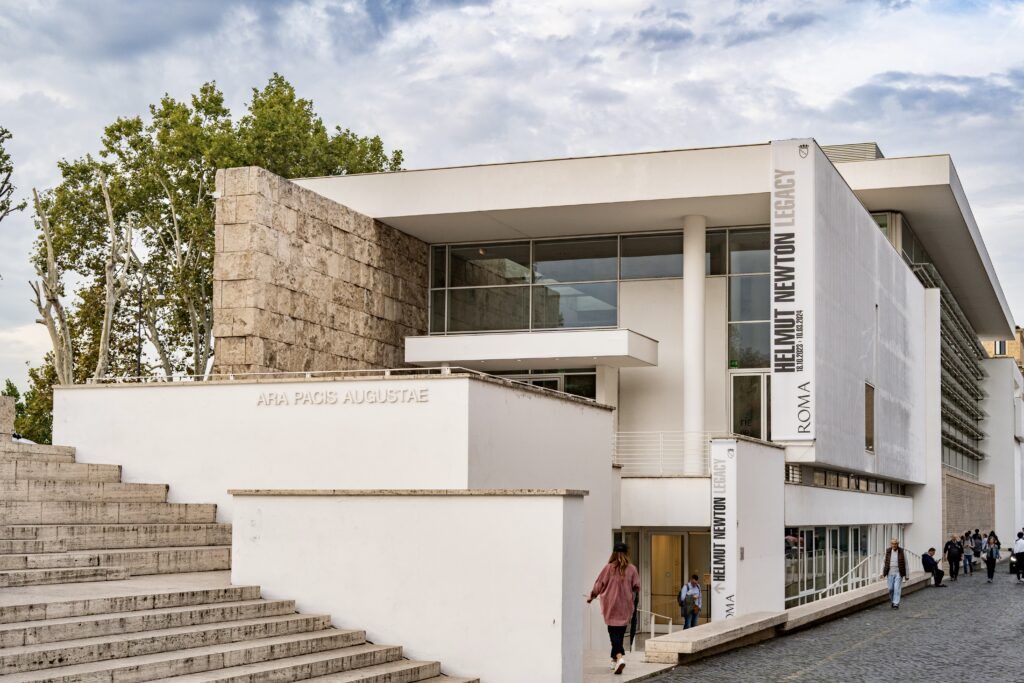
Yet, the Ara Pacis is more than a statement of political power. It’s also a stunning example of Roman art, serving as a portal to a distant era.
This guide to the Ara Pacis gives you a short history of how it came to be and tells you what you can see today.
>>> Click here to pre-book a skip the line ticket
Mini History of Ara Pacis
To understand the altar’s importance, you need a short history.
Augustus was the adopted son and successor of Julius Caesar. He became Rome’s first emperor in 27 BC.
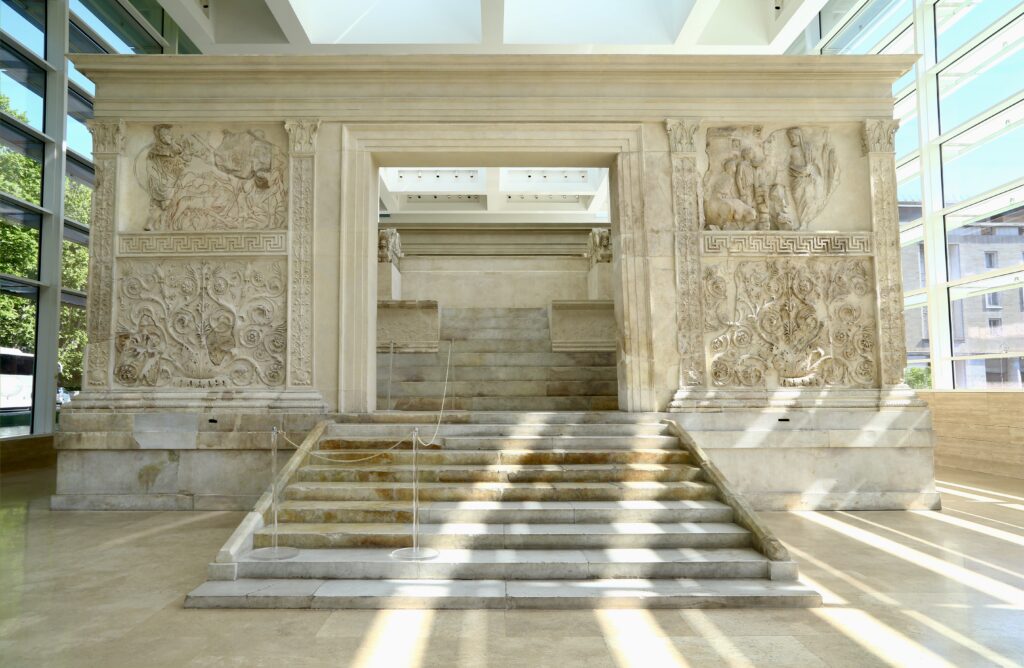
To rise to power, Augustus avenged Caesar’s assassination and defeated rivals for the throne, including Mark Antony. He further cemented his authority with successful military campaigns in Spain and Gaul.
After his victories, Augustus shifted from conqueror to stable and responsible leader. Following years of war, he focused on establishing the rule of law and ushered in a period of unparalleled peace known as the Pax Romana.
The Altar of Peace was built to honor the peace and prosperity of Augustus’ reign. It stood on the Campus Martius and was used as an open air altar for animal sacrifices associated with the Roman religion.
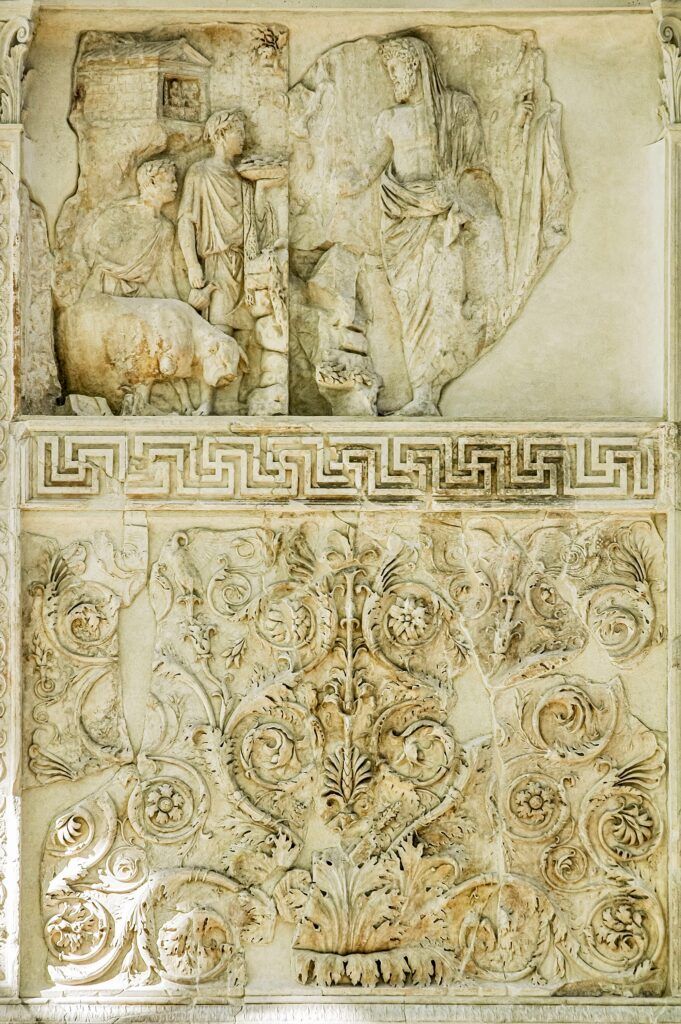
With the fall of Rome, the altar was destroyed by barbarians. It was buried beneath the ground, forgotten until the Renaissance when bits and pieces resurfaced.
In the 1930s, after further excavations, art historian and archaeologist Giuseppe Moretti recognized that the fragments belonged to the famed Ara Pacis.
Mussolini ordered a concerted effort to reconstruct the altar. The initiative was part of his broader strategy to link his regime with the illustrious Augustus.
The process took decades. Indeed, it was a bit of a miracle that it could be reconstructed at all since it had been lost to memory.
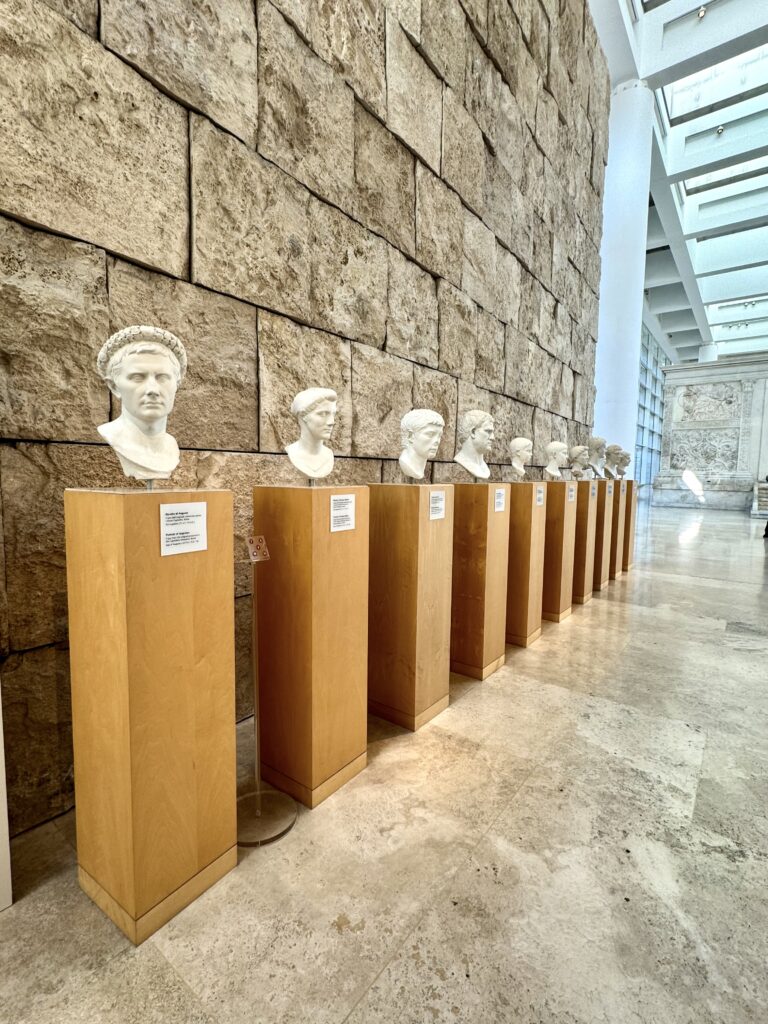
Initially, the reconstructed Ara Pacis was housed in a provisional, protective building near its original location along the Tiber River. But it wasn’t adequate for long term preservation of the monument.
In 2006, renowned American architect Richard Meier was commissioned to build a new home for the altar. He had had just completed the Getty Center in Los Angeles. Meier created an ultra modern space of glass and travertine.
The building was controversial. It was considered too expensive and offended traditionalists.
Personally, I liked the space. The altar is bathed in natural light and the travertine gone well with the marble stonework.
Ara Pacis Guide: What To See
After your ticket is scanned, head straight to the left wall to see the Julio-Claudian dynasty’s family tree.
Then, check out the display of busts. They’re plaster replicas of the family from Rome’s ancient art collections. You’ll see Augustus, Agrippa, Livia, Augustus’ grandchildren (Gaius and Lucius Caesar), and Tiberius.
The Ara Pacis is in the center. It stands 20 feet tall and measures 36 feet wide by 39 feet long. With its classical Greek-inspired design, it sits on a raised platform and is reached by steps.
Surrounding the altar are walls, called the “precinct.” They’re made of Luna marble, a premium white marble. Originally, the altar waspainted in vibrant pinks, blues, and greens.
The altar is beautifully decorated with relief sculptures. Look down to see the intricate vegetal and floral designs in the lower part. Above, the front and back have mythological scenes. On the sides, narrative friezes tell stories from history.
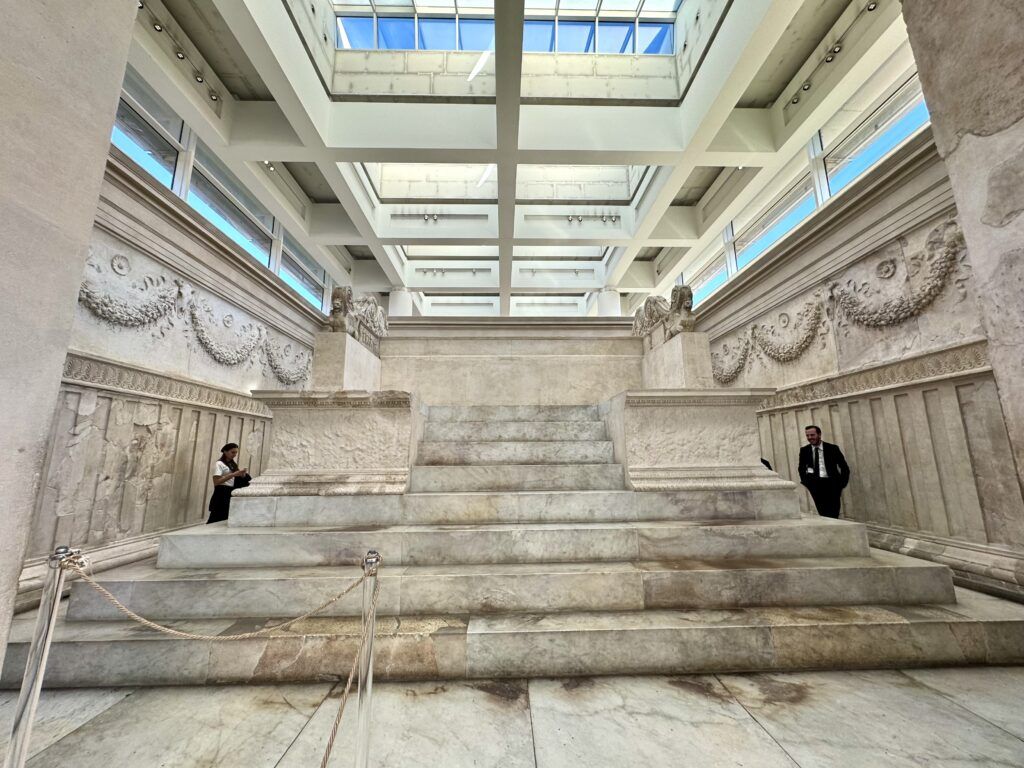
Sacrificial Altar
The Ara Pacis was a working altar.
The internal altar has two bases, with four steps up each one. At the top is the table where animals were sacrificed.
During a sacrifice, the Pontifex Maximus would enter the sanctuary, followed by the vestal Virgins, the flamines, and other priests.
Like the outer walls, the sacrificial table was once decorated with elaborate reliefs. But very little survived.
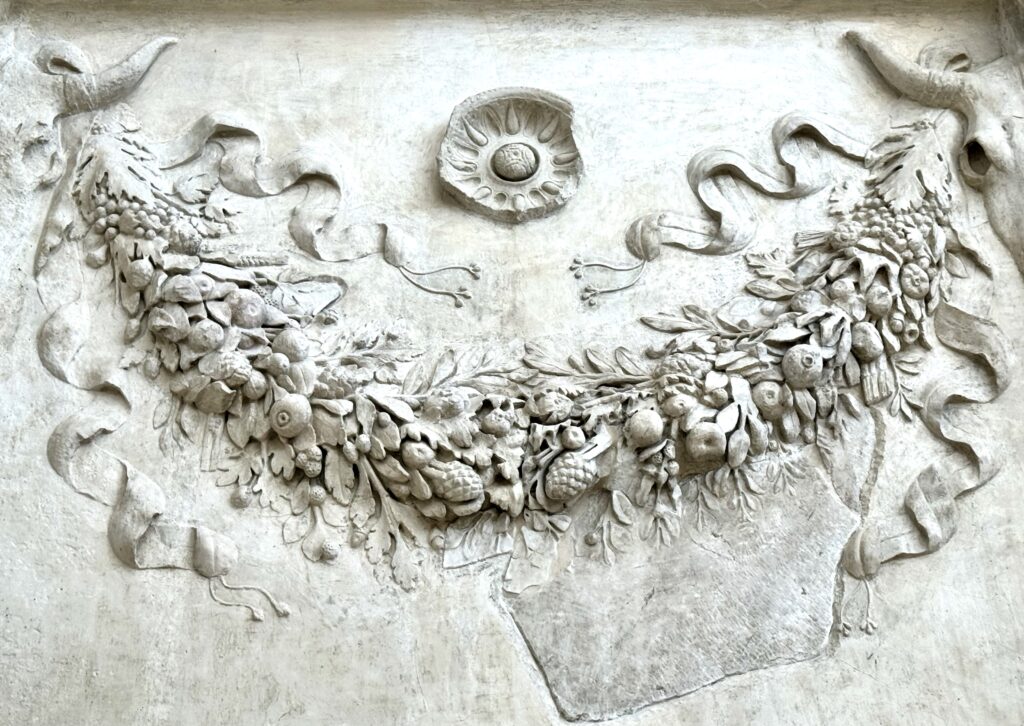
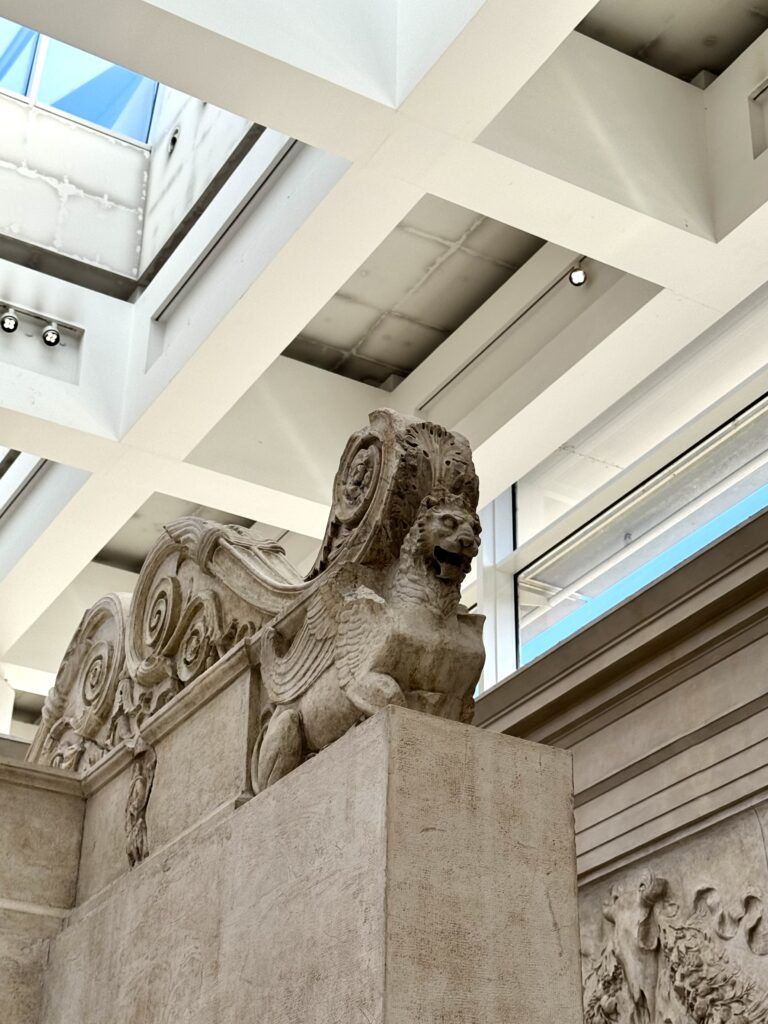
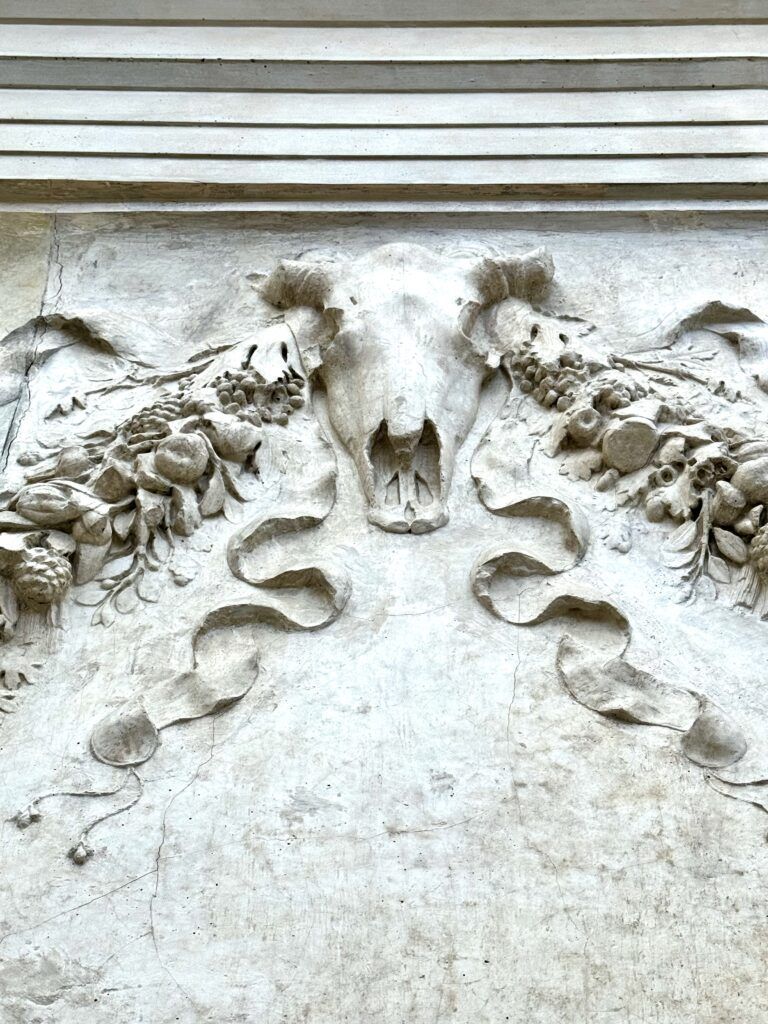
They do have the crowning slabs of the table. They’re decorated with winged lions and vegetal reliefs.
In the lower part, there is a scene of sacrifice, complete with vestel virgins and animals. Historians believe it might be the sacrifice celebrated on January 30 as decreed by the senate to honor Pax, the god of peace.
The surrounding walls were intentionally left plain due to the smoke and flames from the sacrifice. But there is a frieze of festoons hanging from ox skulls.
Look down to see the drain holes in the floor. These were used to wash out blood and fluids after the sacrifices.
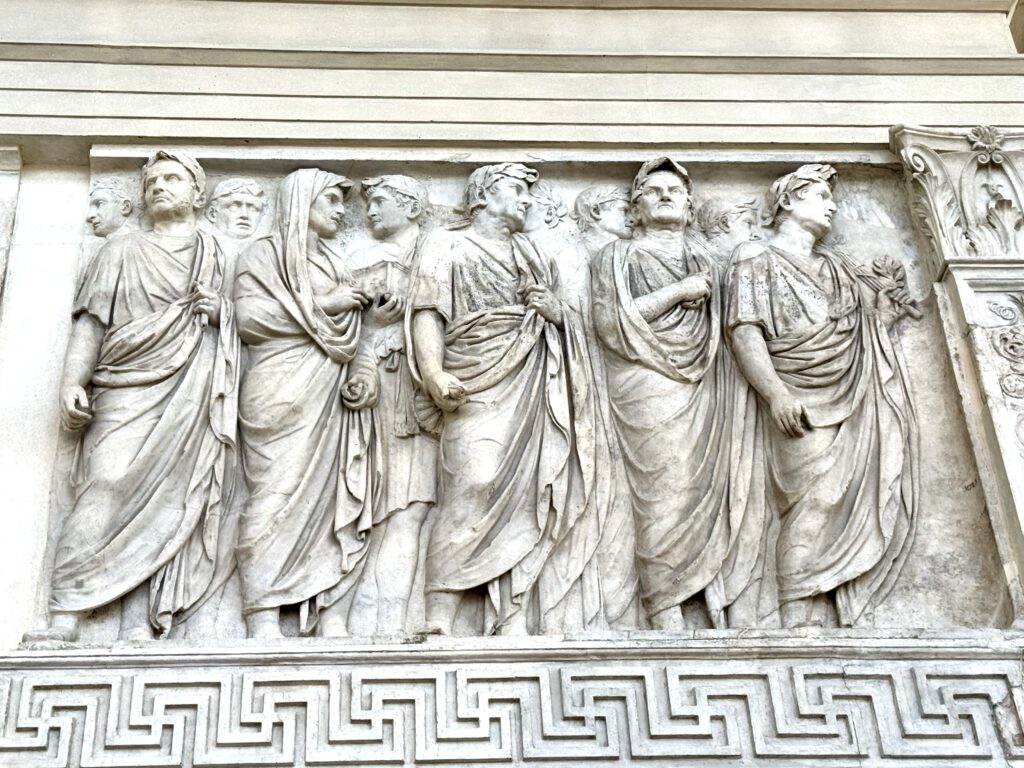
Processional Friezes
The most prominent and extensive decorations on the Ara Pacis are the two long processional friezes on the north and south walls.
These depict members of the imperial family and other dignitaries. They appear to participating in a sacred event. Historians theorize that it could be a religious procession, a procession for Augustus’ return from war, or a procession for the inauguration of the altar.
These are true portraits of actual Romans. Some are shown in high relief. Others, in the background, are in low relief. The contrast gives the precinct a sense of 3D space.
On the north wall, there’s a procession of senators. Each figure is wearing a toga and a laurel wreath on his head, symbolizing victory. On the south wall, you’ll see members of the imperial family, their servants, and children.
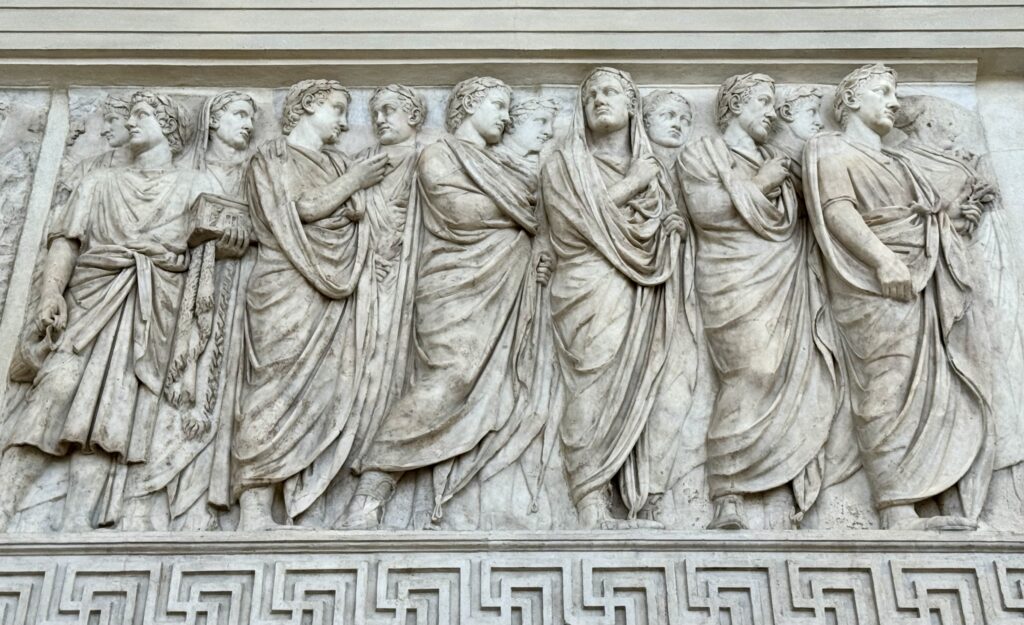
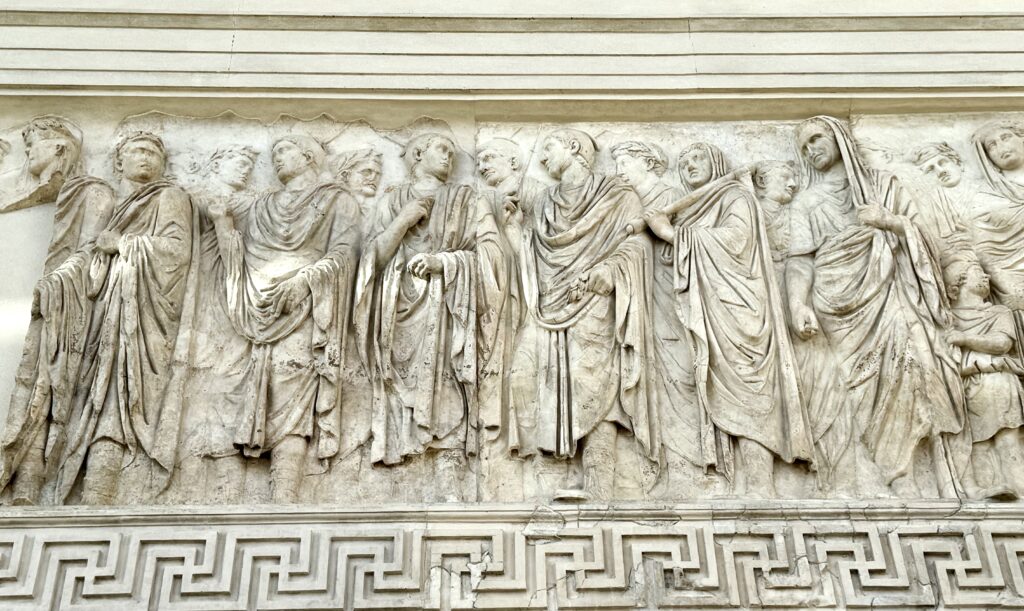
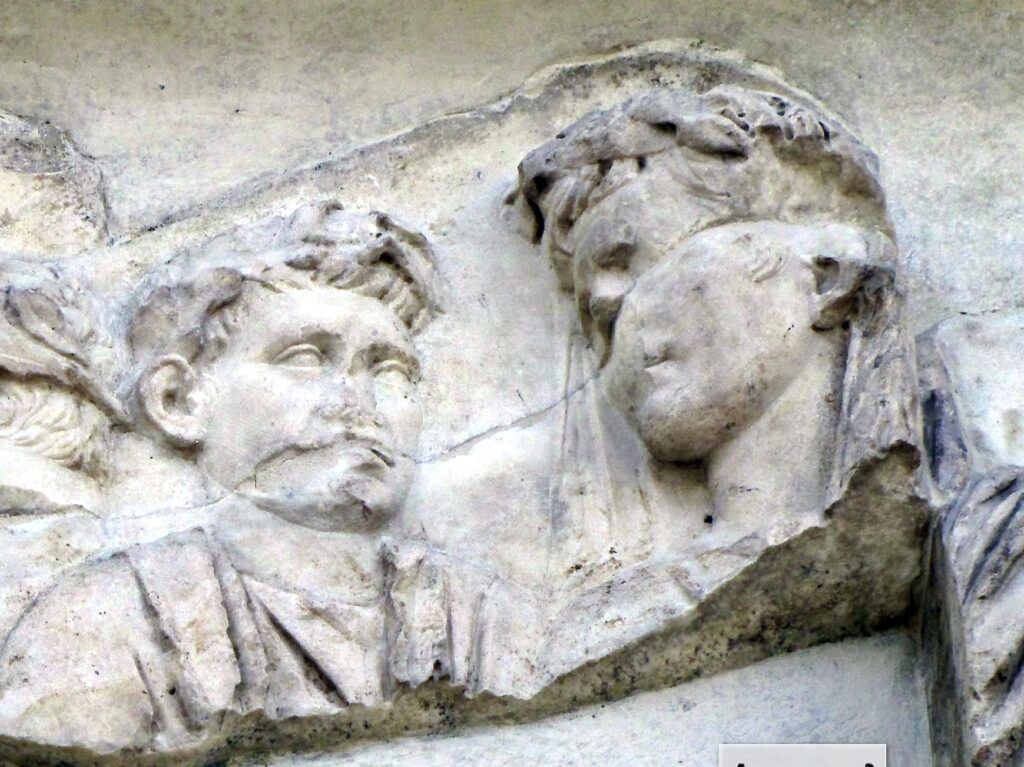
Notable figures include Augustus, his family, various senators, magistrates, and priests. You’ll even see a rare image of Nero as a young boy.
Scholars think they have identified the image of Augustus, though he is missing most of his body.
There is also an image of Agrippa, one of the emperor’s right hand man. He’s next to Augustus’ wife Livia, who wears a veil and garland.
The figures are portrayed in a highly idealized manner, signifying the importance and sanctity of the imperial family and the state.
Unfortunately, there’s not much signage to explain it all. But a panel in one corner indicates the names of all identifiable characters in the procession.
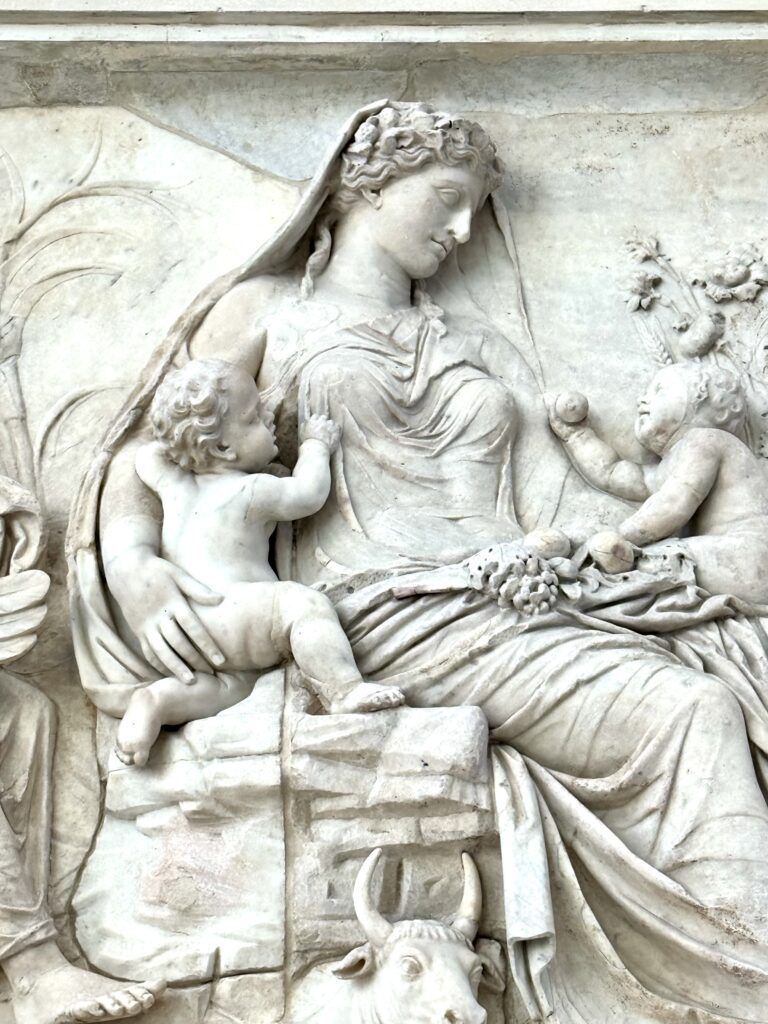
Tellus Panel
On the east side in the front of the altar is the Telles panel, which appears in remarkably good condition. It’s probably the most famous image from the Ara Pacis.
It features a female figure in the center with two babies. Scholars debate who is represented.
It could be a representation of Venus, Telles (Mother Earth), or Pax (Peace). In any event, she’s definitely a symbol of fertility and prosperity under Augustus.
The drapery on the figure is gorgeous and may remind you of the Partheon sculptures.
She’s flanked by mythological creatures, representing the abundance of the earth and sea. They almost look like they’re wrapped in halos.
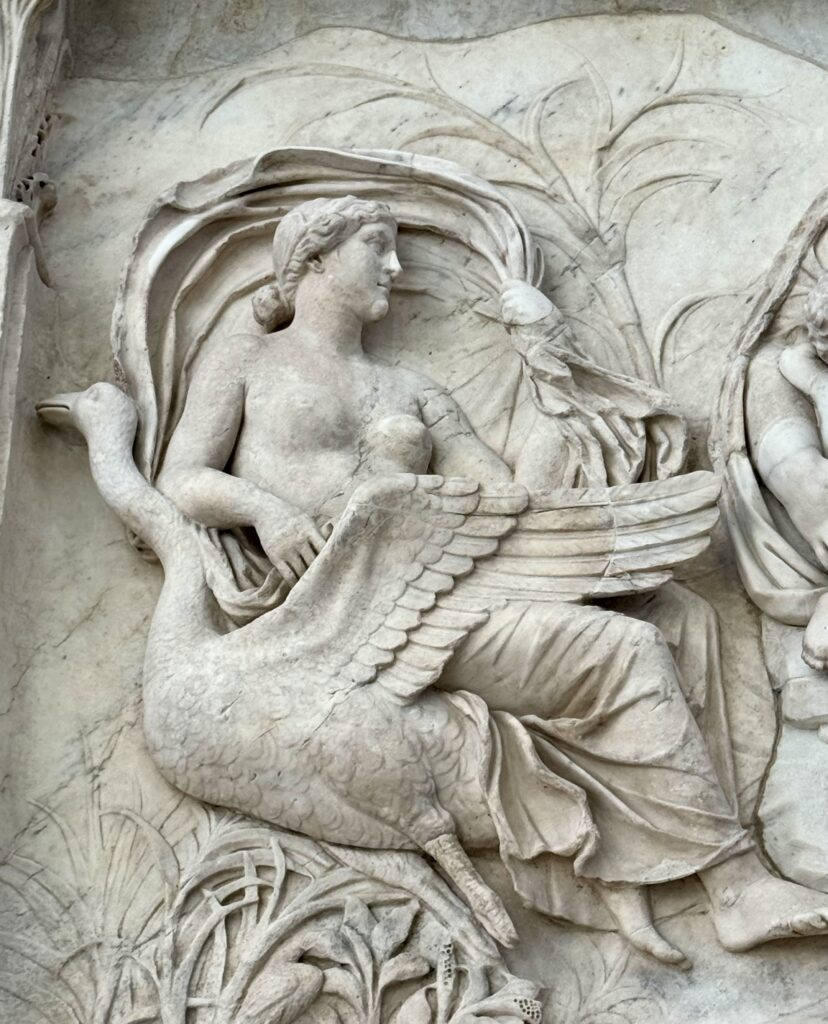
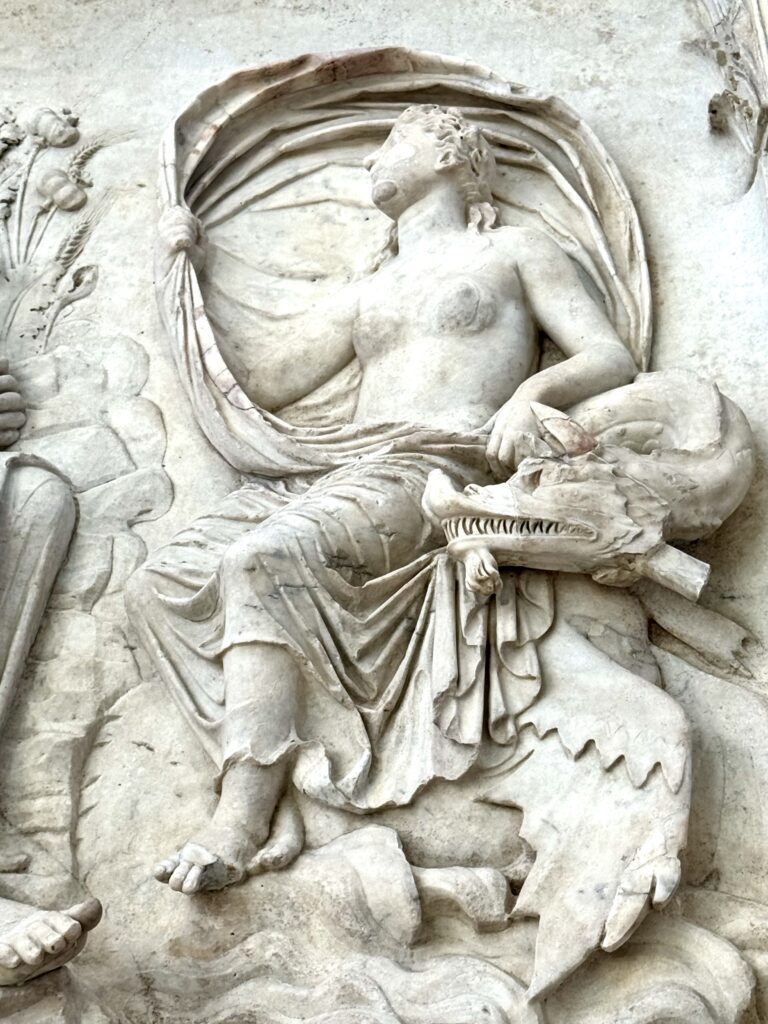
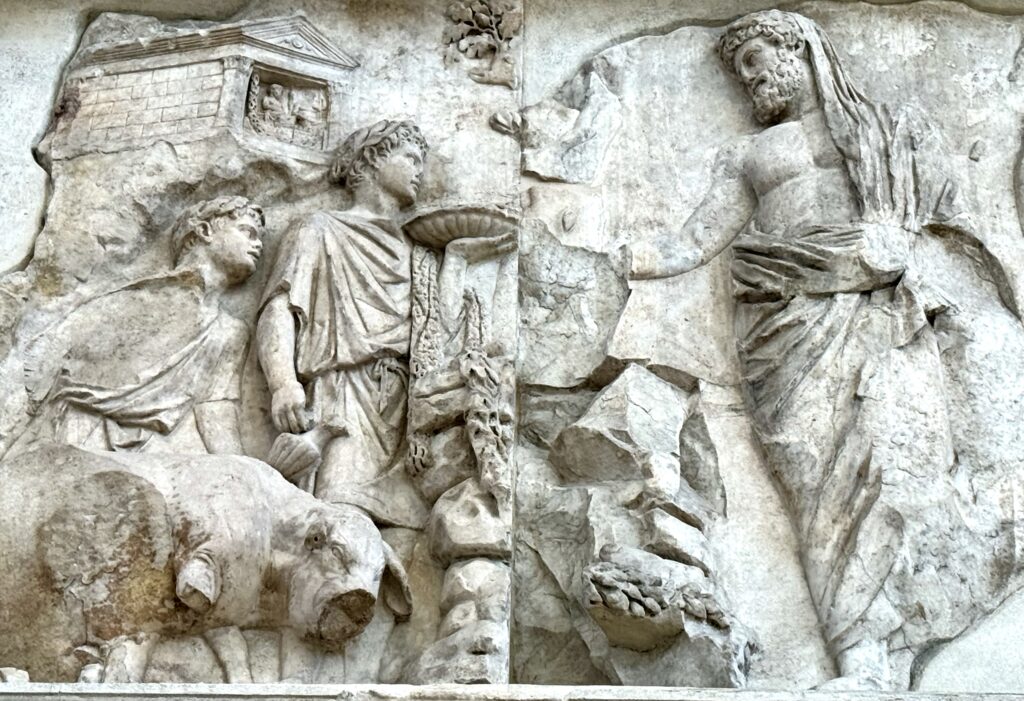
Aeneas Sacrificing Panel
This panel shows the Trojan hero Aeneas, the legendary founder of Rome, performing a sacred ritual.
He’s thought to be making a sacrifice to honor the gods and connect the cities of Troy and Rome, linking the ancient past to Augustus’s time.
In the carving, Aeneas appears as an older man on the right. He’s dressed as a priest and offering a sacrifice.
Although his right arm is missing, he likely held a ritual cup called a patera. Nearby, a young helper carries a tray with fruit and bread, and another brings a cow for the sacrifice.
The scene might represent a moment from Virgil’s Aeneid, where Aeneas, arriving in Italy, sacrifices to the goddess Juno. It’s a meaningful image, showing respect for the gods and connecting Rome to its heroic origins.
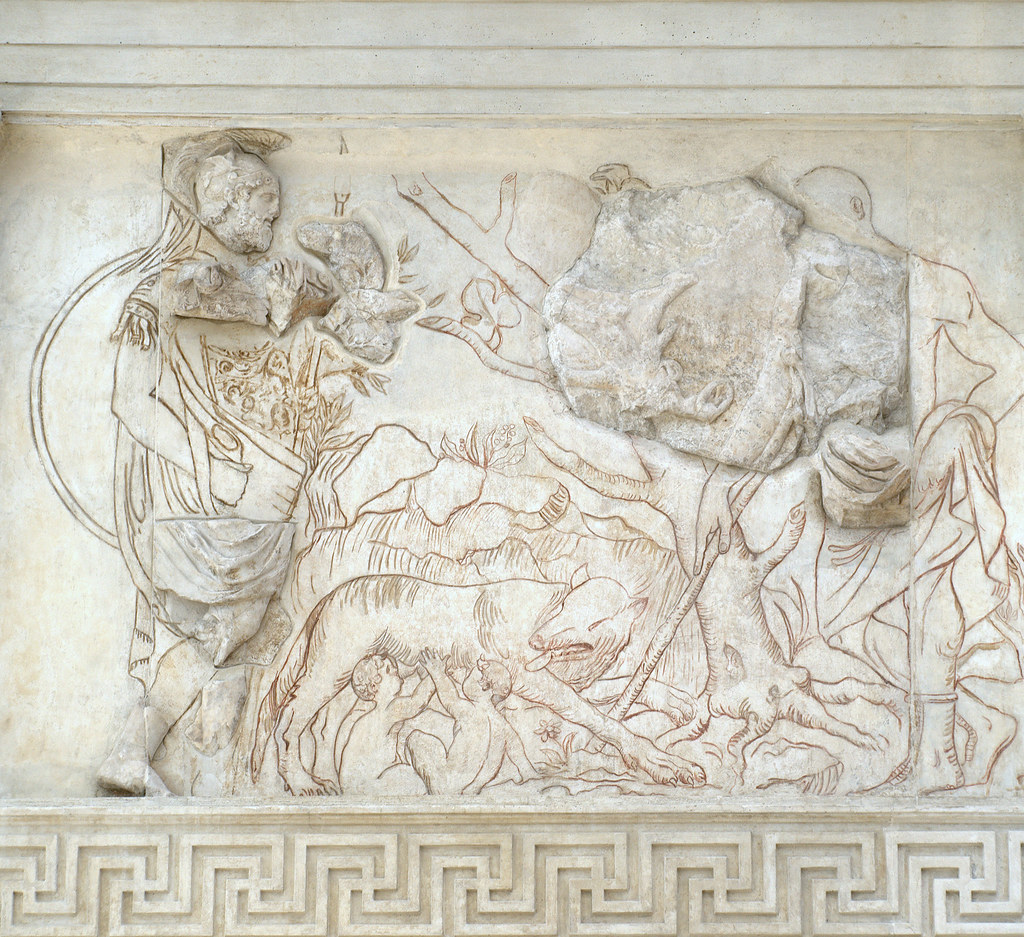
The Lupercal Panel
Another panel shows the She-Wolf suckling Romulus and Remus. it’s a devotional reference to the mythological origins of Ancient Rome.
The twins are framed by a fig tree and accompanied by a shepherd. You can see the talons of a bird.
On the left, the god Mars is depicted in military garb, including a crested helmet with a griffin.
His head is the most remarkable element of the panel. And it was almost lost to the monument. It was unearthed and sold to a private collector before the Italians realized it was part of the altar and repurchased it.
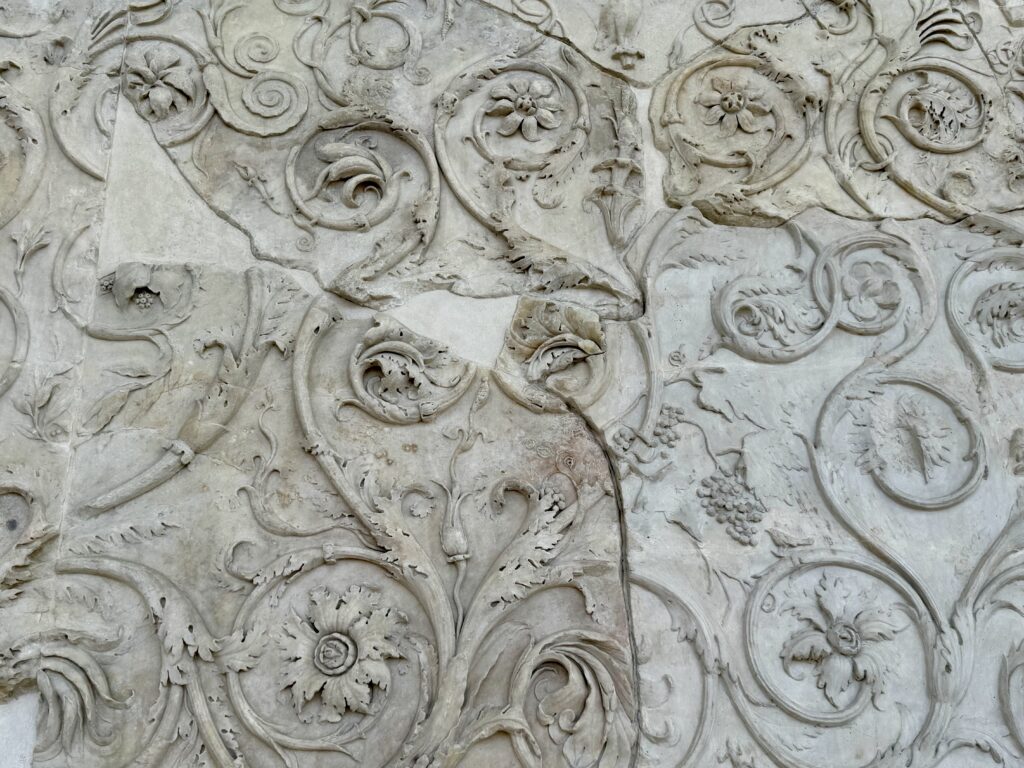
Floral and Vegetal Decorations
The lower friezes are one of the largest bas reliefs with vegetal scrolls ever carved in the classical world.
It’s a single expanding plant that springs from a the luxuriant tufts of a central acanthus plant. There are more than 50 different species of plants depicted.
There are animals forms nestling in there too — frogs, lizards, snails, birds, and swans.
Scholars believe the 20 swans refer to either Apollo or Venus. Or perhaps they represent both of the Augustinian patron-gods.
The decorations are meant to symbolize the fertility and abundance brought by the Pax Romana. Even nature is flourishing thanks to Augustus’ existence one earth.
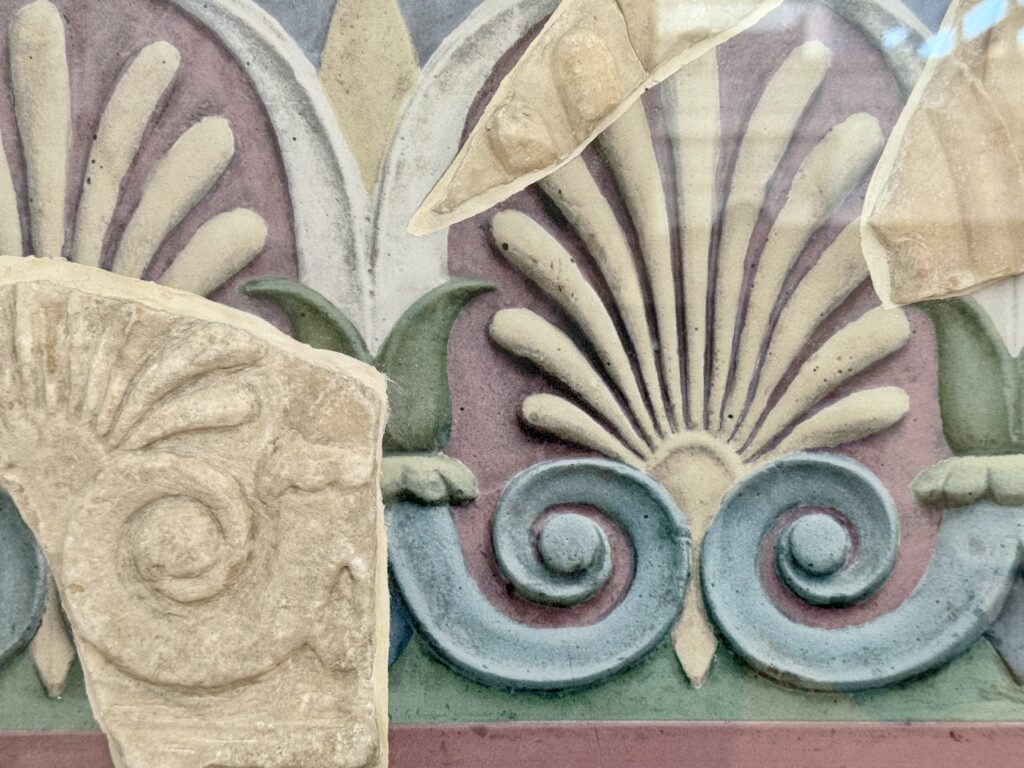
Practical Guide & Tips For Ara Pacis
Address: Lungotevere in Augusta
Hours: Open daily from 9:30 am to 7:30 pm. Last admission 6:30 pm.
Tickets:
€ 10.50. You can also get a large interactive iPad-like audio guide for € 6, which I highly advise getting to know what you’re looking. There’s not much signage.
The museum is also included in the Roma Pass.
I admit, the ticket is a bit pricey to see just one work of art. If you don’t want to pony up the money, you can get a pretty good look at the altar through the windows.
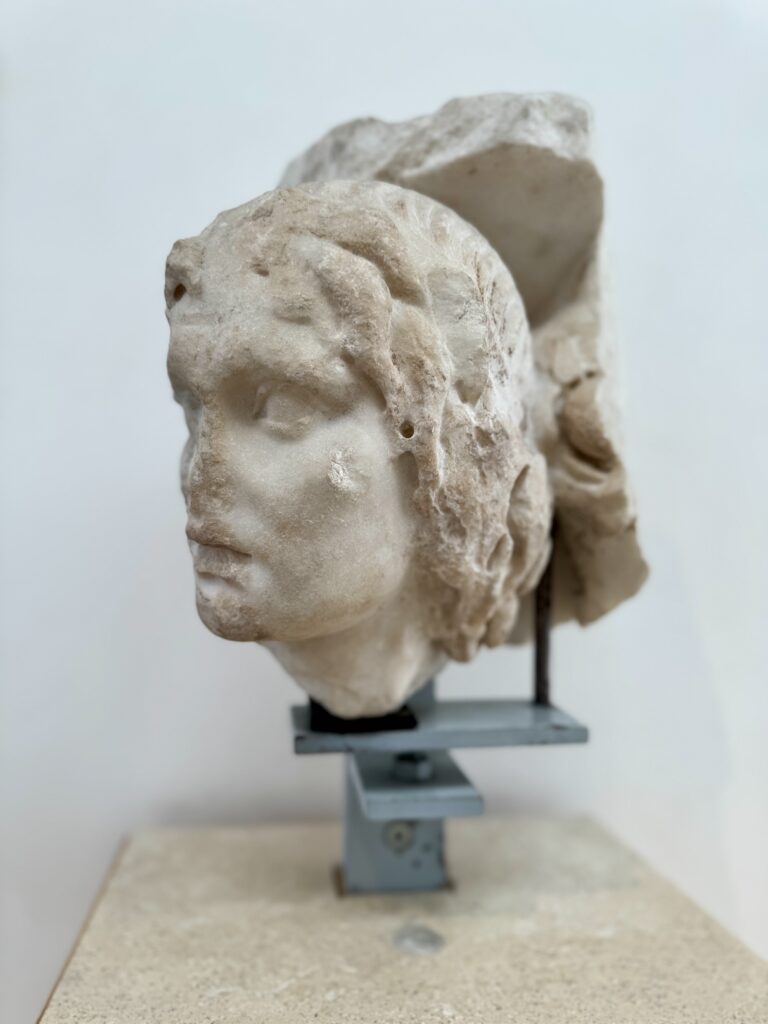
Is Ara Pacis Worth Visiting?
The Ara Pacis is a small museum. I think it’s well worth visiting, especially for lovers of Roman history. You could spend an hour or two here.
If you are not interested in Roman history, the museum may not be your cup of tea especially at its price point. It’s not a great place for kids.
Pro Tips:
There are benches to sit down on and contemplate the altar’s beauty. And the bookstore is fantastic!
In the museum’s basement, you’ll find educational materials about the excavation and restoration of the altar. There’s also a computer touch screen where visitor to can see a 3D reconstruction of the altar both in its present condition and with its probable ancient coloring.
Temporary exhibitions are also housed in the basement. You’ll need to pay a supplemental fee to see those.
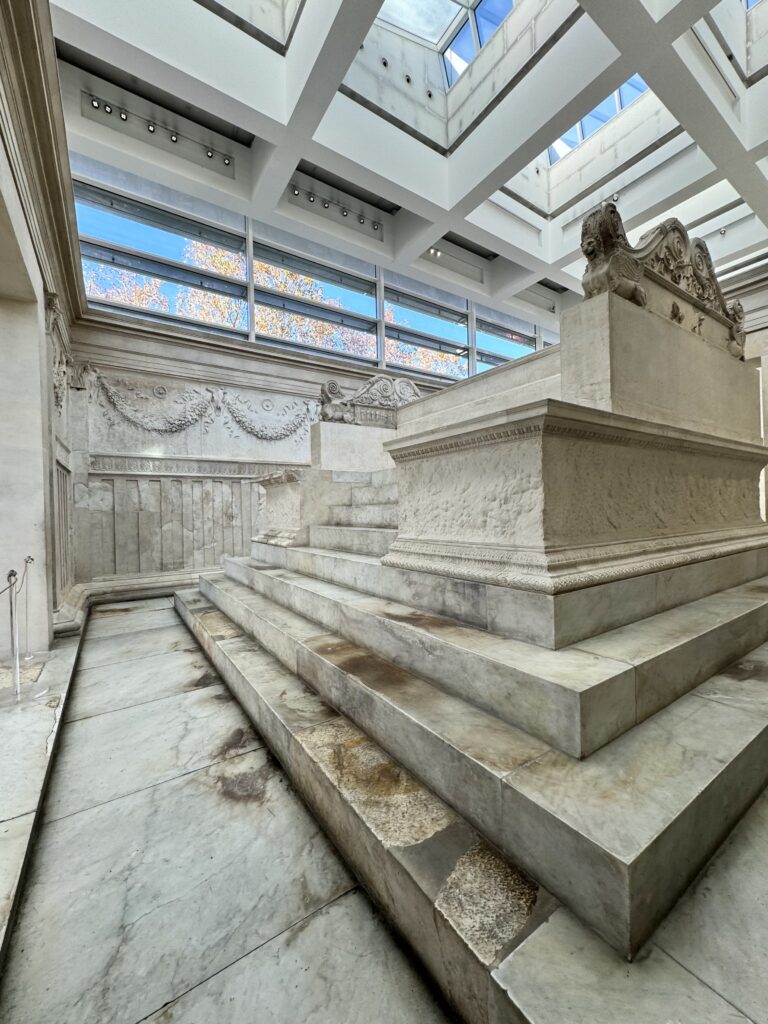
The Ara Pacis is right next to the Mausoleum of Augustus. It’s temporarily closed at the moment. Hopefully, it will reopen soon.
If you are obsessed with Augustus, I highly recommend visiting the House of Augustus on Palatine Hill. You can visit with a SUPER ticket or on a guided tour with a PhD.
I hope you’ve enjoyed my guide to visiting the Ara Pacis. You may enjoy these other Rome travel guides.
- 8 ways to spend 1 day in Rome
- 3 day itinerary for Rome
- 4 day itinerary for Rome
- 5 day itinerary for Rome
- Best museums in Rome
- Hidden gems in Rome
- Archaeological sites in Rome
- Guide to the Borghese Gallery
- Guide to Palatine Hill
- Guide to the Roman Forum
- Guide to the Colosseum
Pin it for later.

